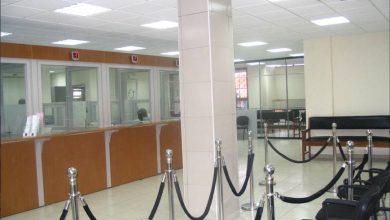Towards Malawi2063, lessons from Vision 2020
If the aspirations of Malawians outlined in Vision 2020 back in March 1998 became a reality, by January 1 2021 the country would have attained middle-income status and take the right path towards reduced poverty.
In brief, Vision 2020 largely failed to achieve its targets of a review by the National Planning Commission (NPC) is anything to go by.
This week, precisely on January 19 2021, President Lazarus Chakwera presided over the virtual launch of Malawi2063, also known as National Transformation 2063, the successor to Vision 2020.
Developed after nationwide consultations, Malawians produced a vision statement that summed up their aspirations for a better Malawi by 2020.
Reads the vision statement: “By the year 2020, Malawi, as a God-fearing nation, will be secure, democratically mature, environmentally sustainable, self-reliant with equal opportunities for and active participation by all, having social services, vibrant cultural and religious values and a technologically-driven middle income economy.”
But by expiry of the beautiful Vision 2020 on December 31, most of the targets were far from being achieved. For instance, during the implementation years, economic infrastructure deteriorated, economic growth rates were below the targets, governance remained “elusive” and Malawi moved nowhere near the aspired middle-income status.
Internationally, a lower middle-income country is defined as one where per capita income ranges between $1 006 and $3 975 while an upper middle-income country has per capita income in the bracket of $3 976 to $12 275. For the record, Malawi’s per capita income has remained flat and low, averaging $372.95 from 1960 to 2018. Currently projected at roughly $400, our per capita income is miles away from the aspired $1 000.
Poverty reduction, another target, failed with 50.7 percent of the population still living below the poverty line of $1.90 per day and 25 percent of the population living in extreme poverty.
So, where did Malawi miss it? During a review of Vision 2020 implementation back in 2019, Oliver Saasa, proprietor and lead consultant of Premier Consult Limited, did not mince words. He aptly stated: “The country [Malawi] was doing efficiently in wrong things.”
During his recent public lecture titled The Quest for a Pragmatic Economic Management Framework in Malawi delivered at Chancellor College, a constituent college of the University of Malawi where he teaches economics, Associate Professor Ronald Mangani stated that the country’s economy has stagnated for 40 good years largely due to neo-liberal policies advanced by key development partners and Western countries.
Briefly, neo-liberalism refers to market-oriented reform policies such as economic liberalisation that includes deregulating capital markets, lowering trade barriers and reducing government control mostly through privatisation and State influence in the economy.
Development economists often argue that an average annual growth of 6.1 percent could take half of the country’s population of 17.5 million out of poverty. In Vision 2020, Malawi envisaged an average growth rate of six percent, but in reality, growth rates averaged 4.39 percent of gross domestic product (GDP) between 1994 and 2018. In fact, in 2018 the economy grew by a paltry 3.7 percent. The picture is even more gloomy now with the impact of the coronavirus pandemic.
In the new vision, Malawi2063—which has staggered 10-year targets—Malawians. Mostly the youth, aspire to have an inclusively wealthy and self-reliant nation by 2063.
Further, Malawians also aspire to have a knowledge-based upper middle-income and industrialised economy built around three pillars of agricultural productivity and commercialisation, industrialisation and urbanisation. Investment in research, science, technology and innovation are critical enablers to acieve this.
Malawi2063 is in tandem with the African Union Agenda2063, a strategic framework or road map for Africa’s inclusive growth, sustainable development and structural transformation with emphasis on the Pan-African vision of an integrated, prosperous and peaceful Africa driven by its own citizen and representing a dynamic force in the global arena.
Political will and ownership of national plans is critical to achieving desired results. It is encouraging to note that the NPC is now in place to coordinate implementation of such national visions and long-term plans.
From now on, political parties seeking to govern the country will have to align their manifestoes to the national transformation agenda. This is good for continuity.
Ensuring the trickle-down of economic growth impact to people will also be important in ensuring that income levels are not skewed.
In a country where nearly everything is politicised and shunned by political ‘rivals’, it was refreshing to learn that former presidents Bakili Muluzi, Joyce Banda and Peter Mutharika and other leaders witnessed the launch of Malawi2063. Inclusivity is good for ownership of such national development plans.
Now that Malawi2063 is here, it will be important for the NPC to draw lessons from the flawed implementation and experiences of Vision2020 to make the new vision work.



